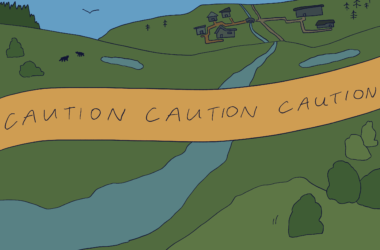A brief history of flight
Home to Air Canada, Bombardier and the Canadian Space Agency (CSA), Montreal has placed itself among the world’s leading aerospace and aviation hubs. In 1856, the first aircraft ever constructed in Canada was a balloon that carried three passengers from Montreal to Pointe-Olivier, Quebec. Flown in 1903, the Wright Flyer was the world’s first successful motor-operated airplane. Since then, there has been exponential growth in inventions and innovations carried out in the aviation sector.
Encouraged by the huge success of the Wright Flyer, Canada hosted its first-ever aviation event in Pointe-Claire, Quebec—25 kilometres west of downtown Montreal. The 1910 event, which lasted one week, was a huge success and had a daily attendance of almost 20,000 visitors. Several professional aviators were present at the event, including France’s Count Jacque de Lesseps—the son of Count Ferdinand de Lesseps, the developer of the Suez Canal that connects the Mediterranean to the Red Sea.
Founded in 1928 in Longueuil, Quebec, Pratt and Whitney Canada (PWC) eventually established itself among the world’s leading aircraft engine manufacturers. A few years later in 1937, Trans-Canada Airways—now known as Air Canada—was founded. Air Canada’s current headquarters are in Montreal, and serve as Canada’s flag carrier and largest airline with over 30,000 employees as of 2019.
In 1963, Canada launched its first artificial satellite (Alouette 1), making it the first nation other than the U.S. or the Soviet Union to ever construct its own satellite. Alouette 1 would later on orbit the earth to study its ionosphere. The Quebec-based aerospace company Heroux Devtek provided the landing system for Apollo 11, the spaceflight that landed Neil Armstrong and Buzz Aldrin on the moon. In 1984, aboard NASA’s Space Shuttle Challenger, Quebec-born current MP Marc Garneau became the first Canadian astronaut to fly into space. Recently, in 1996, the CSA was founded and is currently headquartered in Saint-Hubert, Quebec.
Challenger 3500 by Bombardier: Moving toward more eco-friendly jets
Designed as a successor to the Challenger 350—the best-selling business jet among global charter operators—the Challenger 3500 is set to become one of the world’s most eco-friendly business jets in the super midsize jet class. When tested, the Challenger 3500 was able to carry out a carbon-neutral flight, becoming the first business jet in industry to do so. Carbon neutrality is achieved when the carbon dioxide emissions are balanced by the removal of the same amount of carbon dioxide via carbon offset projects.
Moreover, Challenger 3500 will be equipped with the eWAS Pilot with OptiFlight, also known as the “eco app,” which provides pilots with updated 4D weather information. This technology allows them to choose the most economical flight routes and to avoid challenging weather conditions for flight.
The OptiFlight software also aims to provide pilots with information on how to reduce fuel usage and carbon dioxide emissions during the three main phases of flight: Climb, cruise and descent. The manufacturing of such jets are mainly powered by hydroelectricity, a form of energy that harnesses the motion of water to generate electricity, thus reducing overall carbon dioxide emissions.
CSA’s lunar exploration rover
A total of seven rovers were sent from the earth to survey the moon, all of which were manufactured by either the U.S., China, or the Soviet Union. However, the CSA recently announced a partnership with two Canadian companies—MDA (MacDonald, Detwiller, and Associates) and Canadensys—to send a rover to explore the moon.
The rover will enact scientific experiments and gather meaningful data and measurements that will help scientists gain a better understanding of our moon’s surface. Scientists speculate that the rover will face several hurdles to its survival on the moon, including the frigid and dark lunar nights. If Canada manages to send a rover to the moon, it would become the fourth country ever to do so.









